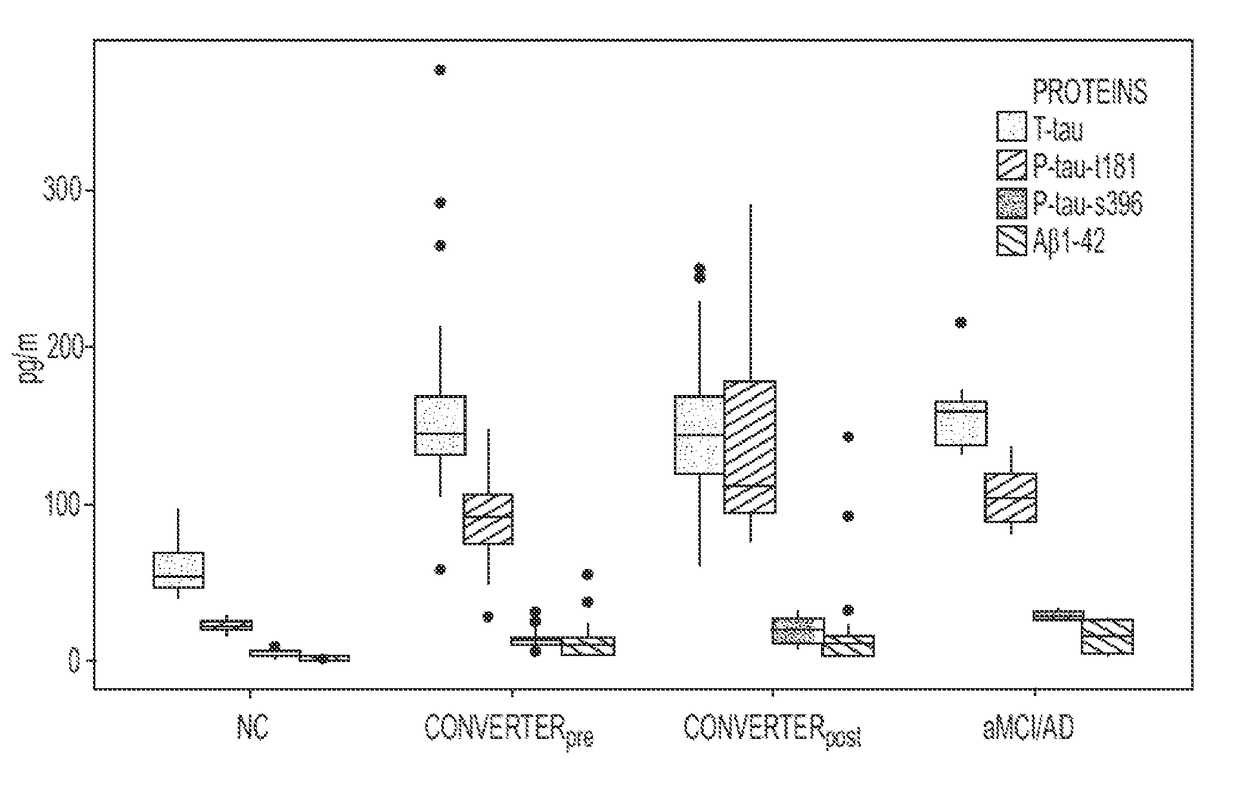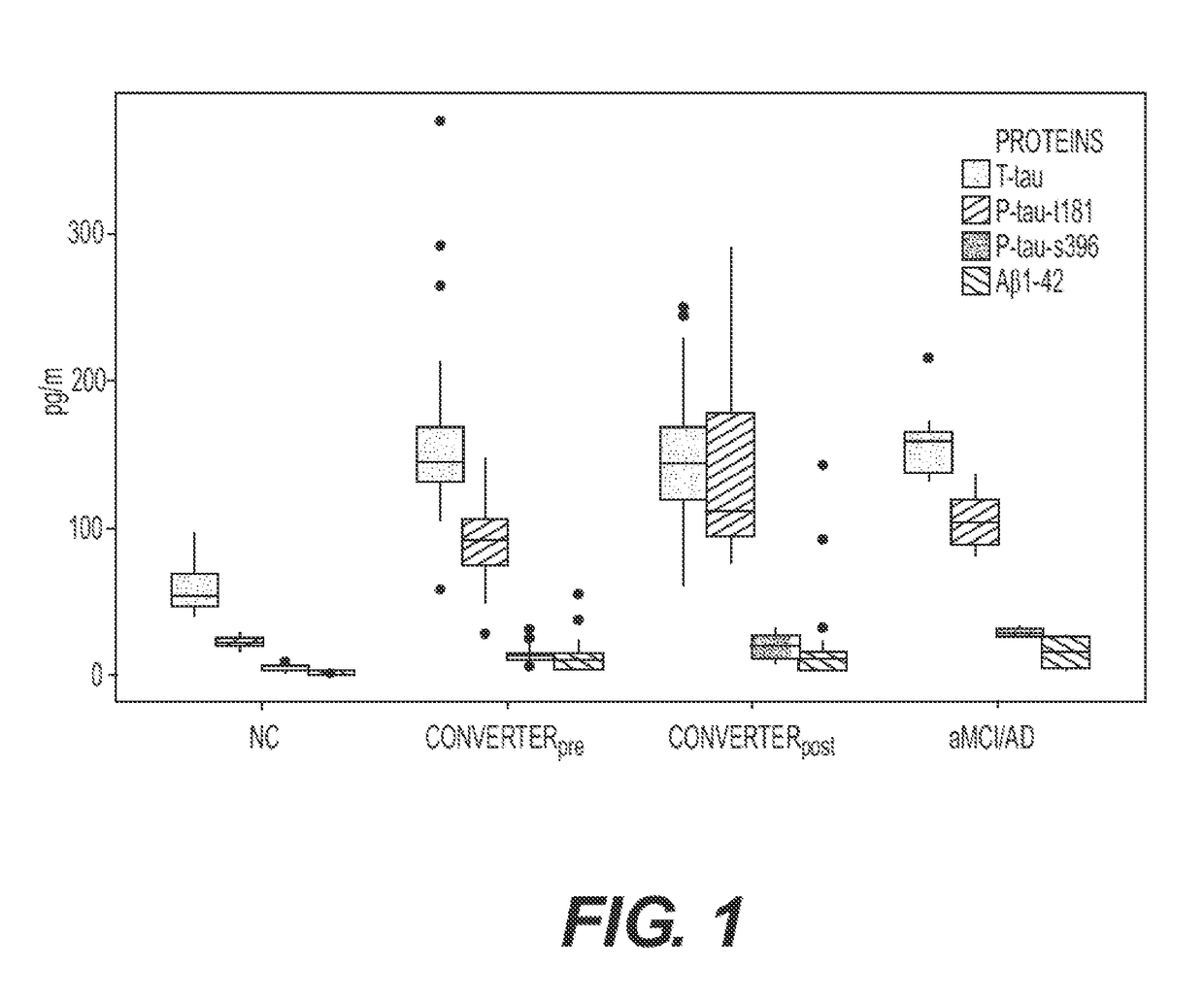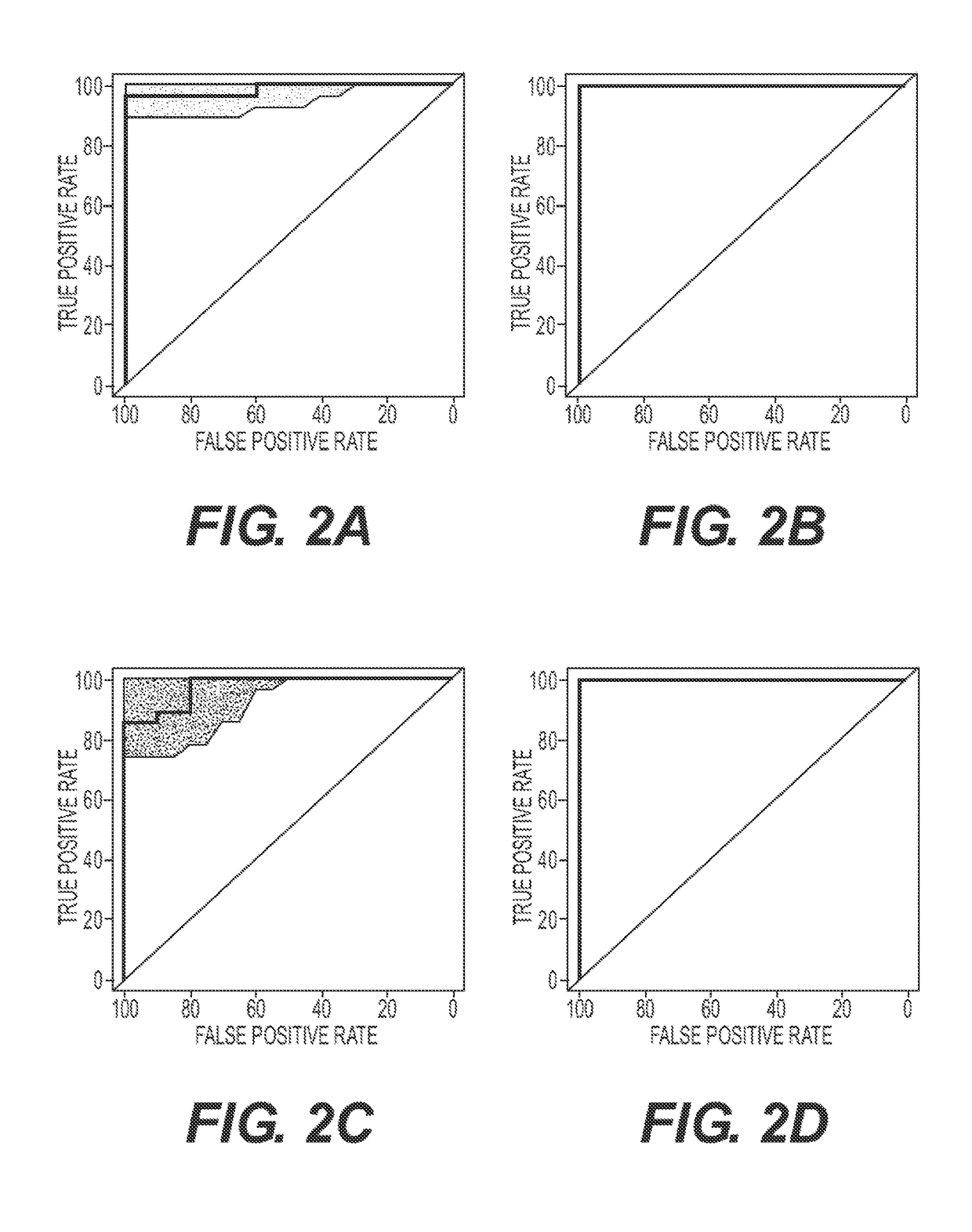Exosome and lipid biomarkers for memory loss
a technology of lipid biomarkers and exosomes, applied in the field of exosomes and lipid biomarkers for memory loss, can solve the problem that subjects have an increased risk of suffering memory impairment compared to a normal individual
- Summary
- Abstract
- Description
- Claims
- Application Information
AI Technical Summary
Benefits of technology
Problems solved by technology
Method used
Image
Examples
example 1
[0073]Neurocognitive Methods
[0074]A total of 525 volunteers participated in this study as part of the Rochester / Orange County Aging Study (R / OCAS), an ongoing natural history study of cognition in community-dwelling older adults. Briefly, participants were followed with yearly cognitive assessments and blood samples were collected following an overnight fast and withholding of all medications. At baseline and each yearly visit, participants completed assessments in such as activities in daily living, memory complaints, signs and symptoms of depression, and were administered a detailed cognitive assessment.
[0075]For this study, data from the cognitive tests were used to classify participants into groups for biomarker discovery. Standardized scores (Z-scores) were derived for each participant on each cognitive test and the composite Z-scores were computed for five cognitive domains (attention, executive, language, memory, visuoperceptual) (Table 3).
TABLE 3Attention (Zatt)Executive (Ze...
example 2
rived Exosomal Analysis
[0083]This investigation was performed on a subset of the subjects from the cohort described in a previous study regarding plasma lipidomics. See Mapstone, M., et al. Nat Med 20, 415-418 (2014), which is incorporated by reference. Stored plasma specimens were retrieved for analysis from 37 cognitively unimpaired subjects, including 10 Normal Controls (NC) and 27 Converterpre individuals. See definitions of clinical groups in World Health Organization. Dementia: a public health priority, (World Health Organization, Geneva, 2012. ISBN 978-92-4-156445-8), which is incorporated by reference. In addition, specimens were obtained from 10 subjects entering the study with evidence of aMCI or AD, and 27 matched specimens from the Converterpre individuals that phenoconverted to Converterpost. Demographic data summarizing our study subjects is provided in Table 4.
TABLE 4Subject DemographicsDiagnosticGroupNCConverterpreConverterpostaMCI / ADNumber of10272710SubjectsAge (yrs...
example 3
c Analysis
[0104]Lipidomics Methods
[0105]LC / MS-grade acetonitrile (ACN), Isopropanol (IPA), water and methanol were purchased from Fisher Scientific (New Jersey, USA). High purity formic acid (99%) was purchased from Thermo-Scientific (Rockford, Ill.). Debrisoquine, 4-Nitrobenzoic acid (4-NBA), Pro-Asn, Glycoursodeoxycholic acid, Malic acid, were purchased from Sigma (St. Louis, Mo., USA). All lipid standards including 14:0 LPA, 17:0 Ceramide, 12:0 LPC, 18:0 Lyso PI and PC(22:6 / 0:0) were procured from Avanti Polar Lipids Inc. (USA).
[0106]Lipid Extraction
[0107]Briefly, the plasma samples were thawed on ice and vortexed. For lipid extraction, 25 μL of plasma sample was mixed with 175 μL of extraction buffer (25% acetonitrile in 40% methanol and 35% water) containing internal standards [10 μL of debrisoquine (1 mg / mL), 50 μL of 4, nitro-benzoic acid (1 mg / mL), 27.3 μl of Ceramide (1 mg / mL) and 2.5 μL of LPA (lysophosphatidic acid) (4 mg / mL) in 10 mL). The samples were incubated on ice f...
PUM
 Login to View More
Login to View More Abstract
Description
Claims
Application Information
 Login to View More
Login to View More - R&D
- Intellectual Property
- Life Sciences
- Materials
- Tech Scout
- Unparalleled Data Quality
- Higher Quality Content
- 60% Fewer Hallucinations
Browse by: Latest US Patents, China's latest patents, Technical Efficacy Thesaurus, Application Domain, Technology Topic, Popular Technical Reports.
© 2025 PatSnap. All rights reserved.Legal|Privacy policy|Modern Slavery Act Transparency Statement|Sitemap|About US| Contact US: help@patsnap.com



